
Here is an extended piece by Jim Pearse, taken from the WLHS Journal No. 7 (1992). We republish it here as part of an occasional series celebrating the work of the Society over time. (A PDF of the article can be found here).
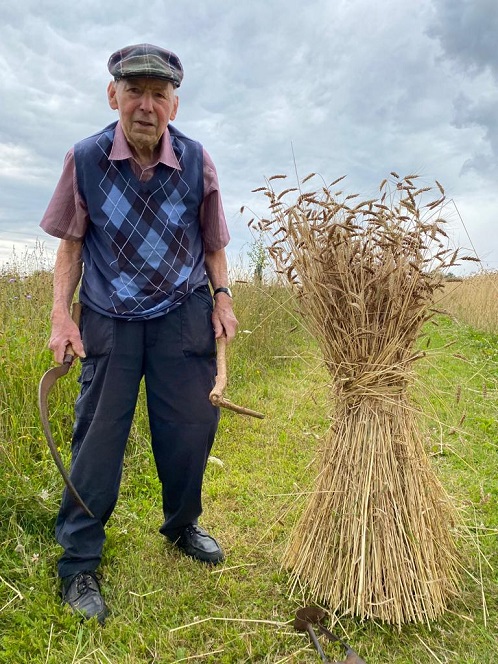
Honeydale Farm lies on a spur of the Cotswold limestone, looking southeast over the valley of the River Evenlode, in the parish of Ascott under Wychwood. The farm takes its namc from the seventeen-acre field known as Honeydale since the Enclosure of 1838. Prior to this, Honeydale furlong within this same area dates back to at least the fifteenth century.
The origin of the name stems from the nature of the soil which is sticky yellow clay. I ploughed, cultivated and harvested Honeydale field between 1954 and 1967, after which it was laid down to permanent grass. Although using a tractor and three-furrowed plough, I maintained the old ridge and furrow system because of its advantages. No drainage system, however modern or efficiently laid, will remove large quantities of surface water as quickly as ridge and furrow. Excess water is immediately transferred down the gradient of the ridges to the furrows which become temporary ditches carrying water downhill to the nearest watercourse. Land drains, though very effective in the long term, only work by removing water after it has soaked down through the soil. This takes time on clay, so that in a wet season with rain nearly every day, the surface of a flat field will remain wet.
See this video of what is happening at Honeydale these days
A continuing tendency for ridges to level down each time the ground is cultivated results in an infill in the furrows making it necessary to ridge up the field once in every three years. That is done starting at the central backbone of each ridge, turning the soil upwards to form a peak and working outwards to the furrow thus leaving the furrow open. In the remaining years the field would be ploughed as normal with wider lands as on a flat field. In wet years furrows produced a poorer crop whilst ridges did well; in dry years the reverse occurred. On average only a quarter of the land, the extremes, was badly affected, three quarters producing a fair crop.
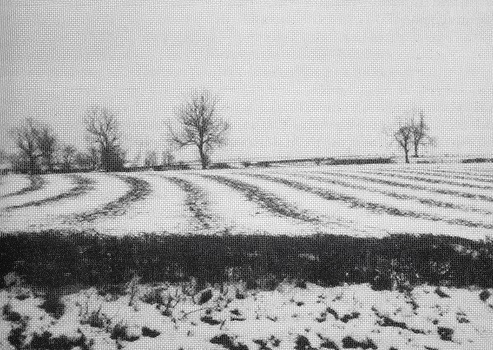
When corn was harvested in sheaves and needed to be left standing in stooks to dry, oats which had very green stems required the longest drying time and needed to stand in the fields ‘while the bells were rung on three Sundays’. In wet summers it was an advantage to stand the stooks on the ridges to catch the drying wind. Carrying the corn was also made easier when wagons could be drawn along the furrow allowing the load to be built with less effort. If sheaves were stacked too damp or green they would either go mouldy or ferment, possibly sufficiently to produce spontaneous combustion.
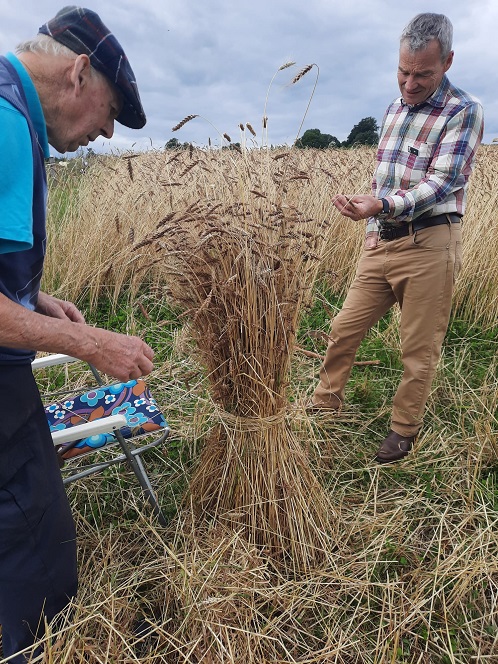
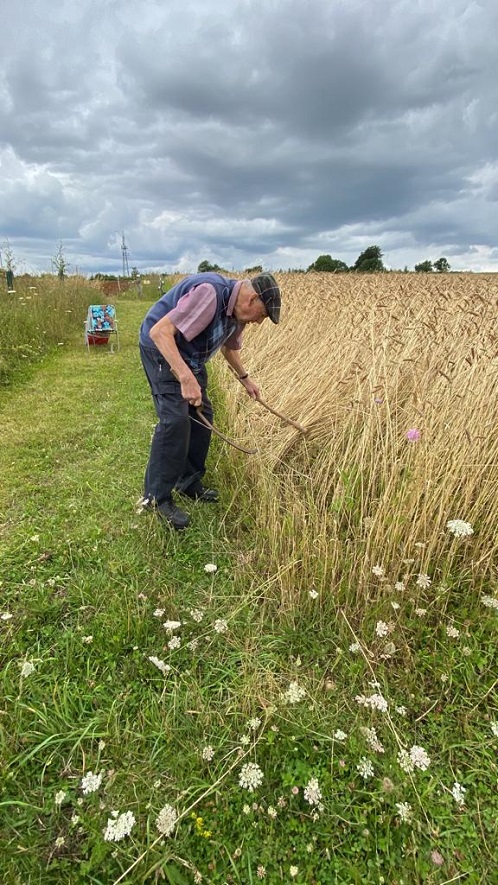
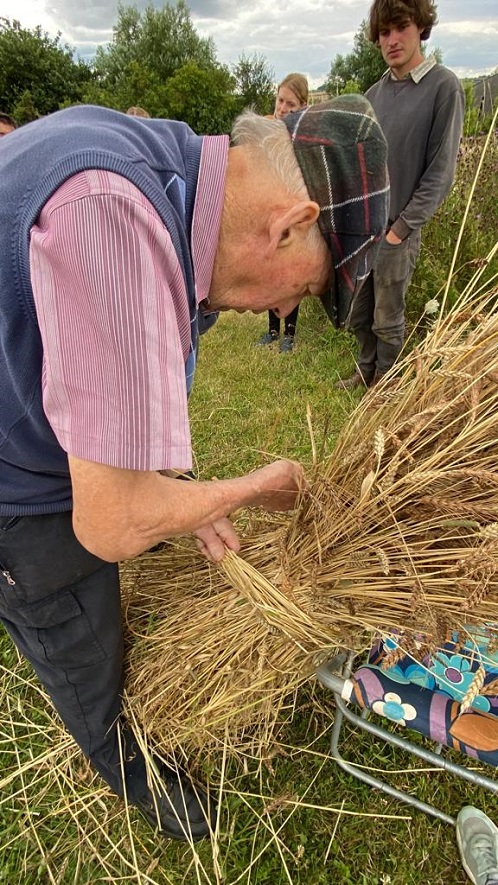
When the soil was loosely cultivated or freshly planted, it did tend to wash down the furrows, but the curving shape of the ridge and furrow slowed the flow of water which left some of the moving soil on the sides of the furrows instead of washing it down the field. It is frequently stated that the curving shape of the ridge and furrow arose by the manoeuvring of the ox ploughs at the ends of the fields. But I wonder if it was partly deliberate through the desire to prevent soil erosion as suggested. It would be interesting to test this theory by checking slopes for curved ridges and flat land for straight ridges. From our view of the valley, only the former are in evidence.
I am convinced that the ridge and furrow system was created deliberately and not as an accidental effect of ploughs repeatedly cultivating individual strips. If the ploughmen of the past knew how to plough, they also knew how to keep the field level if they had wanted to. This is reinforced by the fact that oxen could have pulled a plough on a flat plane across a slope much more easily compared with the effort required to plough up and down which was the normal practice.
The width of modern machinery – drills, sprayers and combines – causes difficulties on ridge and furrowed land. They hit the ridges too hard and miss the furrows. This is the main reason for the modern levelling of these fields. But flat fields displaying large pools of water in winter and early spring are quite possibly levelled ridge and furrow. Of course, nowadays modern fertilisers can normally revive crops affected by waterlogged soil.
The deeper, more fertile soil under ridge and furrow was better suited to wheat production than was the surrounding stonebrash. When wheat was making very high prices at the beginning of the nineteenth century, my guess is that most of these ridge and furrow lands were growing the crop for high profit. But ridge and furrow is still an advantage on grassland since, after prolonged heavy rain, a flat field will be waterlogged whilst furrows channel away all the excess water allowing the ridges to dry more rapidly.
There is no doubt that the ridge and furrow system as practised in the past with a large workforce and mostly manual farming methods was a practicable proposition but one which is not compatible with modern arable farming.

